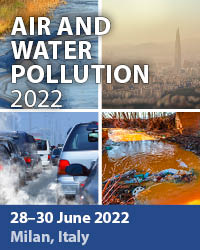Advances In Mathematical Modelling Of Biofilm Structures
Price
Free (open access)
Transaction
Volume
103
Pages
10
Published
2007
Size
573 kb
Paper DOI
10.2495/WRM070221
Copyright
WIT Press
Author(s)
C. S. Laspidou, A. Kungolos & P. Samaras
Abstract
Biofilms are found everywhere in natural waters forming complex microbial communities, playing an important role in ecosystem processes in streams and lakes and making their characterization a major research question. Biofilm models are commonly used as simulation tools in engineering applications and as research tools to identify and fill gaps in our knowledge of biofilm processes. Recently, mathematical biofilm models are becoming more complex and use advanced computational tools to predict the new structure formed under a set of given conditions, as well as the microbial species that comprise the biofilm structure. Moreover, advanced biofilm models incorporate the hydrodynamics of the fluid surrounding the growing biofilm and translate it into forces that act on the biofilm and cause detachment. Thus, they enhance their predictive capability over traditional biofilm models and enable research scientists and engineers to evaluate the relevance of biofilm heterogeneities to their function. An overview of the features of the unified multi-component cellular automaton (UMCCA) model is presented. The UMCCA model describes quantitatively the complexity of biofilms for all biofilm components: active bacteria, inert biomass, and extracellular polymeric substances (EPS). It also includes original donor substrate, two types of soluble microbial products (SMP), and oxygen. The UMCCA model captures all trends observed experimentally regarding biofilm density by employing the novel idea of biofilm consolidation, according to which the biofilm packs itself to a higher density over time. The UMCCA model can also be used to describe biofilm mechanical properties variable in time and space, making it possible to predict where it is likely to fail, or detach. Keywords: biofilm modelling, extracellular polymeric substances, EPS, biofilm density, inert biomass, active biomass, soluble microbial products, SMP.
Keywords
biofilm modelling, extracellular polymeric substances, EPS, biofilm density, inert biomass, active biomass, soluble microbial products, SMP.





